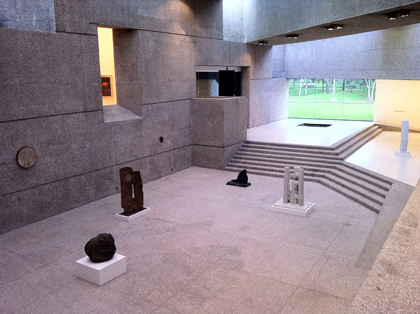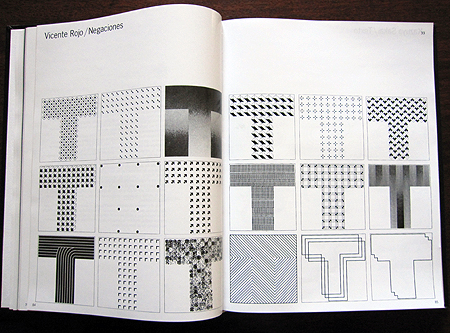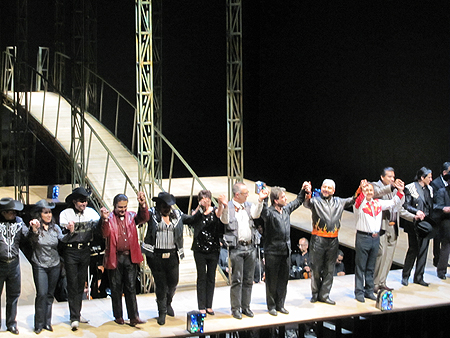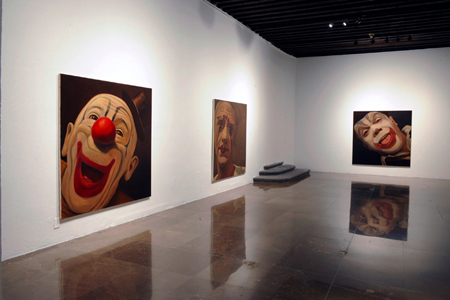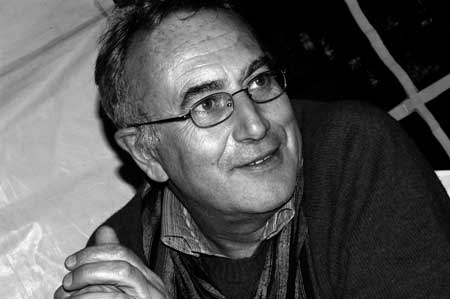Traveling Because
Wednesday, July 30th, 2014
It’s not just a technicality that film is referred as the moving image. Films transport. Fittingly, among the latest I’ve seen is one of the kind that are considered road movies: Viajo porque preciso, volto porque te amo (I Travel Because I Have To, I Come Back Because I Love You). Released in 2009, it is directed by Karim Ainouz and Marcelo Gomes, two leading figures in what’s become a lively experimental film scene in the Northeast of Brazil. I’ve watched this film more than a dozen times since last year, first in the big screen, as part of a program organized by Cine Esquema Novo in Porto Alegre; thereafter in Youtube, where it was posted in its entirety by a fan—and which, for some reason, I can no longer find on that website nor in my networks.
Viajo porque preciso, volto porque te amo is made-up of location shots gathered and archived for years by Ainouz and Gomes, materials they’ve given a newfound end through their montage. The film mostly comprises of establishing shots or landscapes taped from a moving vehicle, all of which are evidently taken with a disinterest in attaining high-quality photography. Place is what matters, and their placement next to each other what’s meaningful. Their sequence is given sense by the film’s protagonist, whose semblance is only made known through a diaristic voice-over. He’s a young geologist, we learn from the start, who takes us through a months-long field-trip research in an un-tropical Brazil, and who we accompany as he abandons the planned itinerary of his road trip. He’s suddenly decided to explore different routes. Let’s call these possibilities.
The digressions experienced are initially prompted by boredom and memories; eventually by encounters with people our geologist meets throughout the journey. For these latter sequences, we see primarily still-shots, portraits of individuals, couples or groups (friends among them, circus people, prostitutes), passers-by and families, characters he introduces us with names and locations. Through them, he contemplates as much on commonness as he does on the extraordinary. And, as much as our geologist is able to understand tectonic movements by observing a rock’s shape and land fissures, he is able to comprehend other kinds of moving experiences through the skins and eyes of these individuals. In the process, less scientific than intuitive, he questions notions of belonging and happiness, doing so with a more speculative than poetic intent. The geologist’s delivery of this all is voiced less as a journal of his exploration, than a kept epistolary account drafted during a road trip, of which addressee is a never appearing correspondent—a Dear Love or, innately, a Dear Diary, Dear You, Dear Double.
The film’s narrative and syntax has various surprising turns albeit an absence of peripety or much plot. One of these beautiful surprises is the location and factura of the film’s ending. Composed of jump cuts, primarily presented in slow motion, the images are blue- and orange-hued color-saturated shots of La Quebrada in Acapulco, Mexico. La Quebrada is a ravine famous for its divers, who jump into the sea from natural ledges that are as high as 80 feet, and who must intuitively calculate the right time, instinctively identify the appropriate wave, to make their dive and avoid catastrophe. It is a daily spectacle in Acapulco. Has been so for decades. But in this film it is a unique, intimate event. Suicide, death, mortality all crossed my mind—as the points stressed at the end of the film, that is. But it was actually living, living differently to be precise, the idea that eventually, insistently settled. That when courage is missing, finding encouragement is a start. Immersing in the moment, just the beginning.
Pictured above, El Valle de Mexicali, as seen from the peeks of La Rumorosa, Baja California, México

